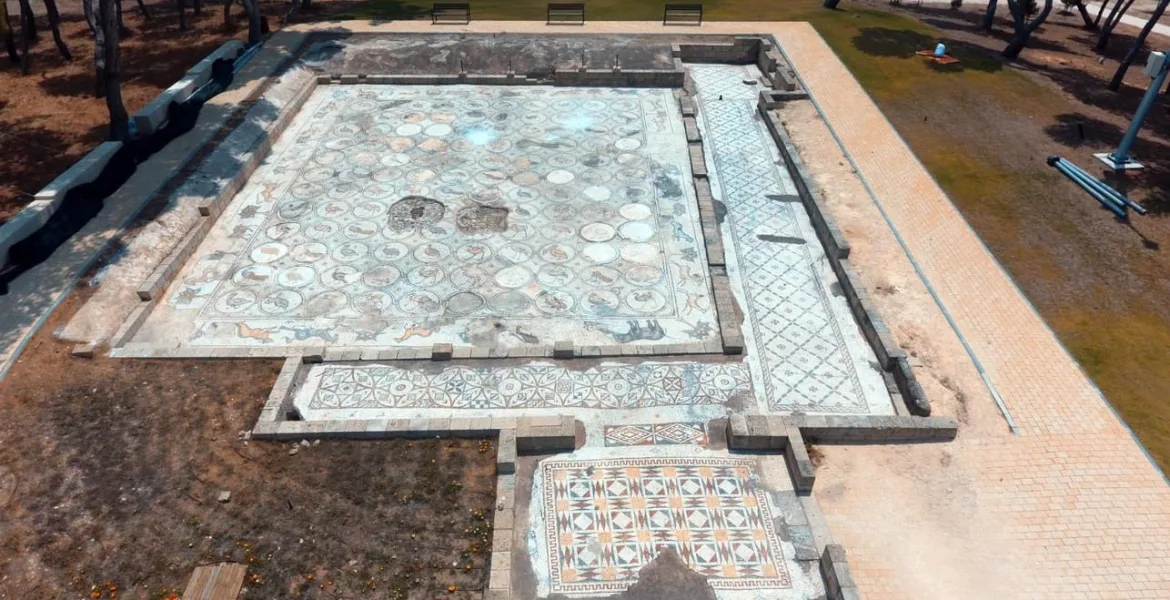Caesarea, a coastal city in Israel, is known for its rich historical and archaeological significance. In 1950, a remarkable discovery took place in a residential area of Caesarea, revealing a stunning mosaic depicting birds and animals. This archaeological treasure, referred to as the Bird Mosaic, belonged to a magnificent Byzantine-period palace or mansion. After being carefully excavated, protected, and re-uncovered several times, it continues to captivate visitors today. Additionally, the excavation unearthed a one-of-a-kind sigma-shaped glass-gold table, shedding light on the opulent lifestyle of Byzantine Caesarea.
The Resurrection of the Bird Mosaic
The Bird Mosaic's story began in 1950 when it was fortuitously discovered during military training activities in Caesarea. It was immediately buried under sand to safeguard its preservation. In 1955, under the guidance of archaeologist Prof. Shmuel Yeivin, the mosaic was meticulously excavated. However, to ensure its long-term protection, it was once again covered. Fifty years later, in 2004, the Israel Antiquities Authority Caesarea Conservation Unit, led by Conservator Amir Genach, unveiled the mosaic to the world once more. The mosaic's true beauty and historical significance had resurfaced.
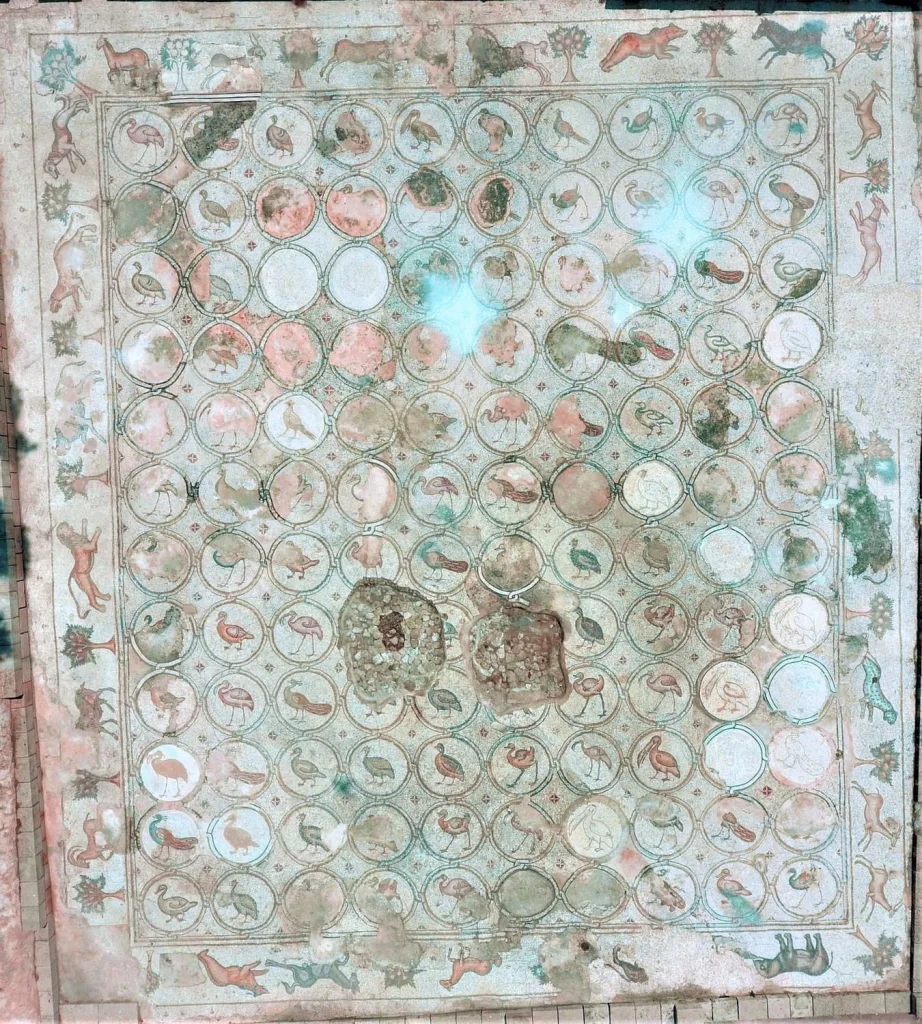
The Magnificent Bird Mosaic
The Bird Mosaic, resembling a rectangular carpet, measures an impressive 14.5 × 16.0 meters and belonged to a magnificent Byzantine-period palace or mansion. Dating back to the sixth century CE, this Byzantine-period palace covered an estimated area of around 3,000 square meters, with only a fraction having been excavated. The palace featured a grand hall, an upper story supported by majestic columns, and a luxurious courtyard adorned with vibrant mosaics. Surrounding the mosaic are depictions of fruit trees and a collection of wild animals, including lions, leopards, bears, wild boars, gazelles, dogs, elephants, deer, and oxen. Furthermore, 120 circular medallions depict an array of different bird species, adding an exquisite touch to the artwork.
Highlighting the significance of the Bird Mosaic and its connection to the elite of Byzantine society, IAA retired archaeologist Dr. Yosef Porath said, "The exquisite remains testify that the residential complex was owned by one of the most important figures in Byzantine Caesarea."
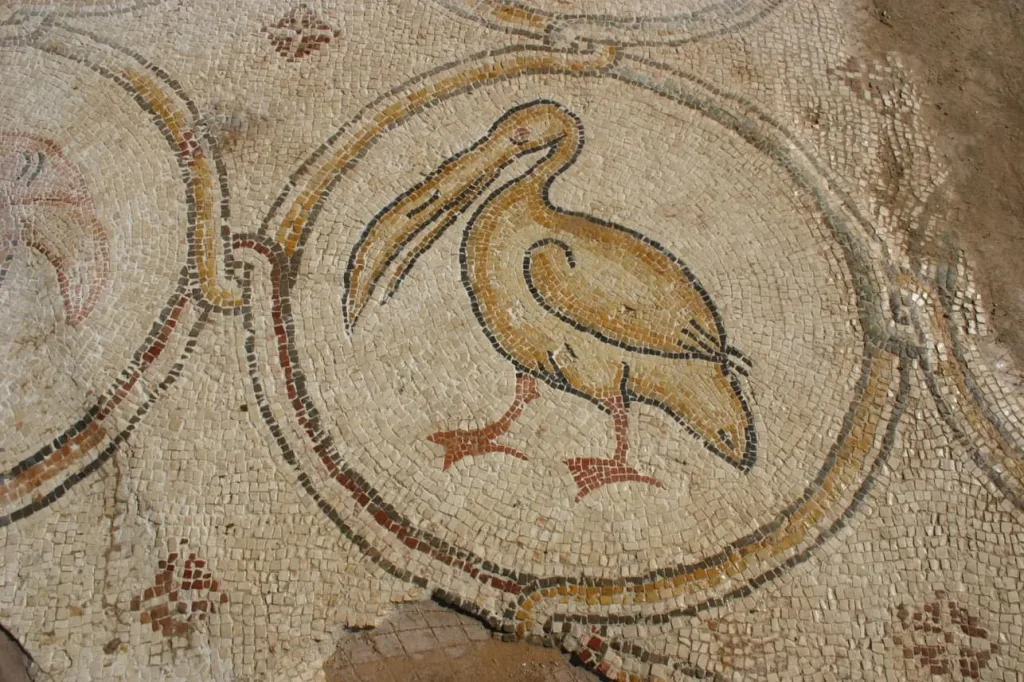
Sole of it's Kind in the World: The Sigma Shaped Glass-Gold Table
During the excavation, Dr. Porath made another remarkable discovery—an exceptionally rare horse-shoe shaped - also designated ‘sigma-shaped’ after the Greek letter Σ - table. What sets this table apart is its construction using the 'glass-gold' technique, a unique method not found anywhere else in the world.
Dr. Porath explained, "after creating the 'glass-gold' square tiles, decorations of flowers and crosses were embedded in each tile."
He further elaborated, “Some of the tiles were made using the ‘glass-gold’ technique, while others were made of greenish glass with various coloured spots, resembling a colourful mosaic. The tiles made with both techniques were laid in a checkerboard pattern, creating a stunning colourful design.”
The extraordinary discovery offers a glimpse into the opulence and artistic prowess of the time.
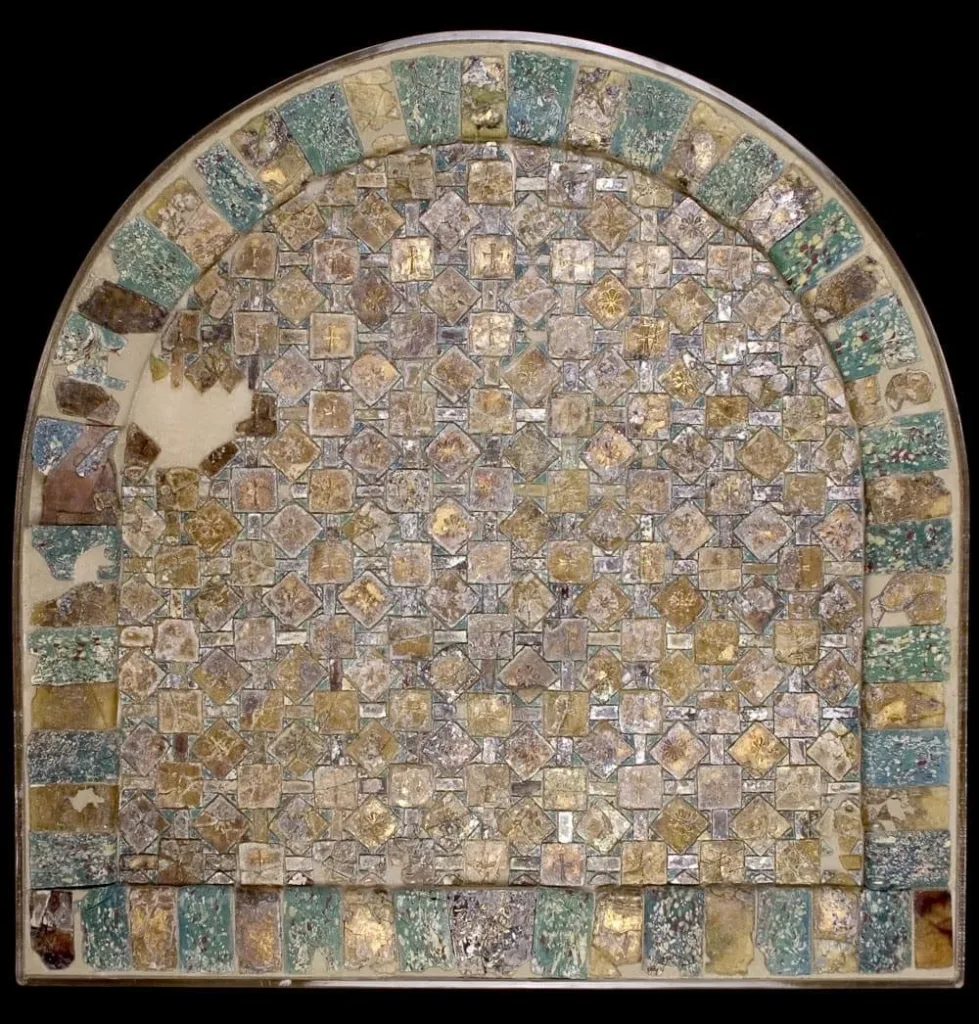
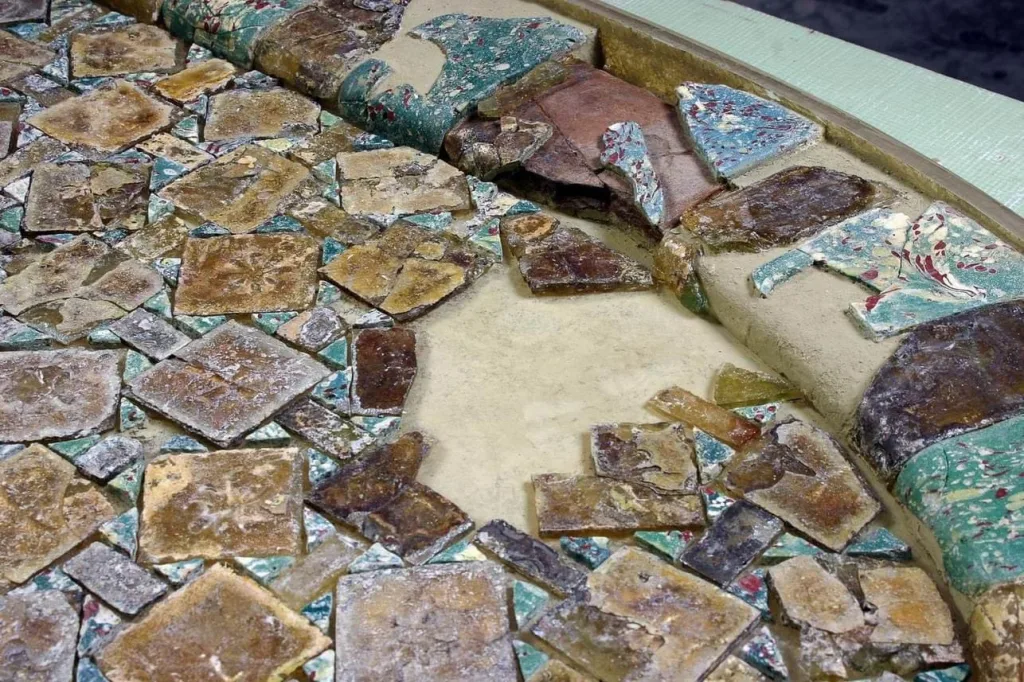
Preserving History
The sigma shaped Glass-Gold Table has found its rightful place of honour in the Glass Pavilion at the Eretz Israel Museum in Tel Aviv, where visitors can marvel at its exquisite craftsmanship. Dr. Porath's statement regarding the table's unique construction technique reflects its importance: "This was a unique find, as to date, no other sigma-shaped table in the world has been discovered utilising this technique."
As for the Bird Mosaic, it remains at its original site in Caesarea, allowing the public to appreciate its grandeur free of charge. These archaeological treasures serve as a testament to the rich cultural heritage and artistic achievements of Byzantine Caesarea.
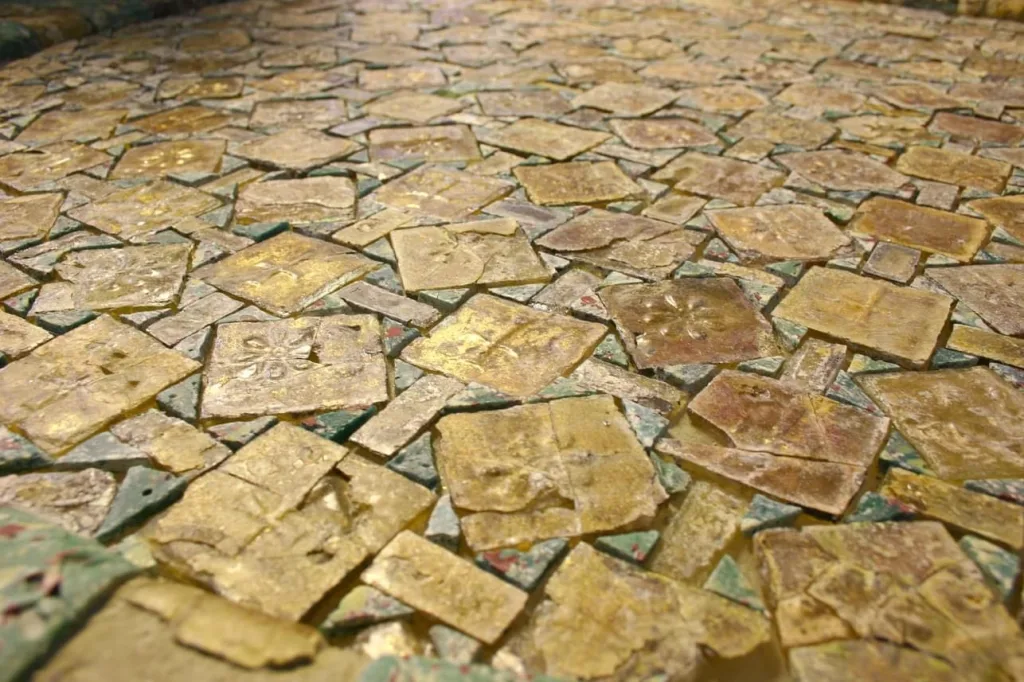
The rediscovery of the Bird Mosaic and the sigma-shaped glass-gold table in Caesarea has unveiled a captivating glimpse into the opulent lifestyle of Byzantine Caesarea's elite, with the mosaic's intricate design, showcasing a myriad of birds and animals, testament to the artistic and cultural prowess of the time. Meanwhile, the glass-gold table's unique construction technique and colourful pattern, particularly its sigma-shaped form, offer an unparalleled view into the craftsmanship of the era. These ancient treasures continue to amaze admirers, inviting them to step back in time and appreciate the rich history of Caesarea's Byzantine period.
Read also Louis Vuitton's 'Deep Time' Collection Debuts in Greece

